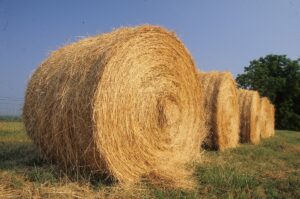Updated Cost of Community Services Study – CHATHAM COUNTY
go.ncsu.edu/readext?1077673
en Español / em Português
El inglés es el idioma de control de esta página. En la medida en que haya algún conflicto entre la traducción al inglés y la traducción, el inglés prevalece.
Al hacer clic en el enlace de traducción se activa un servicio de traducción gratuito para convertir la página al español. Al igual que con cualquier traducción por Internet, la conversión no es sensible al contexto y puede que no traduzca el texto en su significado original. NC State Extension no garantiza la exactitud del texto traducido. Por favor, tenga en cuenta que algunas aplicaciones y/o servicios pueden no funcionar como se espera cuando se traducen.
Português
Inglês é o idioma de controle desta página. Na medida que haja algum conflito entre o texto original em Inglês e a tradução, o Inglês prevalece.
Ao clicar no link de tradução, um serviço gratuito de tradução será ativado para converter a página para o Português. Como em qualquer tradução pela internet, a conversão não é sensivel ao contexto e pode não ocorrer a tradução para o significado orginal. O serviço de Extensão da Carolina do Norte (NC State Extension) não garante a exatidão do texto traduzido. Por favor, observe que algumas funções ou serviços podem não funcionar como esperado após a tradução.
English
English is the controlling language of this page. To the extent there is any conflict between the English text and the translation, English controls.
Clicking on the translation link activates a free translation service to convert the page to Spanish. As with any Internet translation, the conversion is not context-sensitive and may not translate the text to its original meaning. NC State Extension does not guarantee the accuracy of the translated text. Please note that some applications and/or services may not function as expected when translated.
Collapse ▲ In 2023, work began to update the Cost of Community Services (COCS) study for Chatham County in coordination with the Lois G. Britt Agribusiness Center at the University of Mount Olive. The first such study of its kind, conducted in 2007, provided critical insight regarding infrastructure and service costs based on various land use categories within Chatham County.
In 2023, work began to update the Cost of Community Services (COCS) study for Chatham County in coordination with the Lois G. Britt Agribusiness Center at the University of Mount Olive. The first such study of its kind, conducted in 2007, provided critical insight regarding infrastructure and service costs based on various land use categories within Chatham County.
To conduct the COCS, researchers collected financial records from local governmental entities to assign various municipal services costs to either residential development, commercial/industrial development or agricultural/forestry lands. Results can provide county leaders with better understanding of the net gain or loss for various land uses within those three main land use categories. Ultimately, the intent is to use this study as a planning tool by local government officials and staff to plan for smart growth and define a good, equitable balance between open lands and development within the county.
Chatham County is a strong agricultural community, contributing to over $338M in cash receipts and $438M in forestry sector output on an annual basis. Recent stats show that Chatham County ranks first in the state for beef cattle production, third in the state for sheep and goat production, and seventh in dairy cattle population (NCDA Ag Stats, 2024). Agriculture and agribusiness industries account for a significant portion of the County’s total annual income, and preserving and protecting agricultural and working lands is beneficial both to agriculture as well as the collective wellbeing of Chatham and the Triangle area.
The updated Chatham County COCS Study has outlined the following findings:
- For each $1 of county revenue contributed by residential uses, the county spent $1.18 to provide necessary community services for those residential land owners.
- For each $1 of county revenue derived from commercial uses, Chatham County spent $0.29 for county-provided services.
- For each $1 of income received by Chatham County for agricultural/forestry uses, the county spent $0.35 to provide required services.
Because residential lands are a net loss to the county, the gain realized from commercial and agricultural properties help to cover the residential deficit and maintain the fiscal stability of the county. Studies have revealed when a rural community with a large base of farm and forestland begins to convert that land into residential development, the local government is virtually guaranteed to head down a path of deteriorating financial stability and increasing local property tax rates (COCS, 2023). The same holds true whether this is planned growth or due to market forces and a lack of growth control measures being in place.
While residents and many commercial entities demand expensive public services and infrastructure, privately-owned working lands enhance community character and quality of life without requiring significant public expenditures. Their fiscal contributions typically are overlooked, but like other commercial and industrial land uses, agricultural (farm, ranch, and forest) lands generate surplus revenues that play an essential role in balancing community budgets. Simply put, communities pay a high price for unplanned growth, scattered development is costly, and saving land saves money.
To access the Chatham County Cost of Community Services (COCS) Study, please click here.




